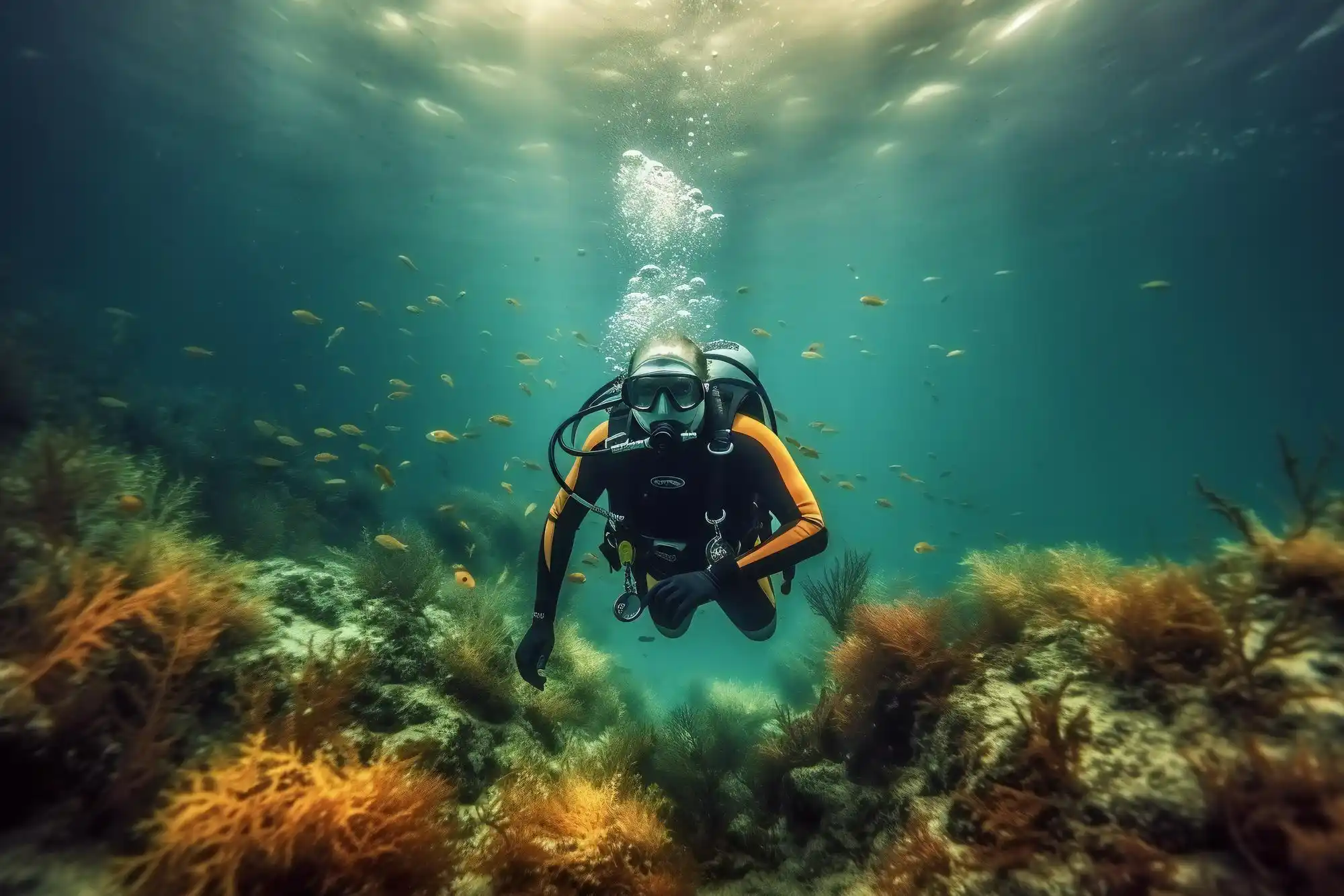Diving is an enthralling and extreme water sport that allows divers to explore the mysterious world beneath the waves. For many, diving is not just a recreational activity; it's a captivating lifestyle.
1. Basic Diving Techniques

Diving is a captivating sport, and understanding the basic techniques in its various forms is a crucial first step in exploring the amazing underwater world. Here are some fundamental diving techniques that enable divers to experience extraordinary moments beneath the surface:
1.1 Breath Hold Diving
Breath hold diving is the simplest and most primitive form of diving. In this technique, divers rely on their body's ability to hold breath while submerging. Strong breath-holding skills are essential for this type of diving. With regular practice, skilled divers can explore significant depths relying solely on their breath.
Though breath hold diving is straightforward, it possesses its own unique beauty. Divers experience the underwater silence without the noise of breathing apparatus. They feel as if they are one with the underwater environment, carefully observing marine life. However, divers need to limit their time underwater due to their limited breath-holding capacity.
1.2 SCUBA Diving
SCUBA diving, or Self-Contained Underwater Breathing Apparatus, is the most common form of diving. In SCUBA diving, divers use breathing apparatus, including an oxygen tank, regulator, and buoyancy control device. The oxygen tank provides divers with an ample air supply to explore greater depths and durations.
SCUBA diving allows divers to explore the underwater world more freely. They can immerse themselves in deeper waters and have complete control over their breathing. This form of diving is highly popular as it is accessible to almost everyone with proper training.
Also Read: Apply for a Loan Through BFI Finance Now!
1.3 SSBA Diving
Saturation System Breathing Apparatus (SSBA) diving is a form of diving used by professional divers for deep and prolonged underwater work. For instance, SSBA divers are often employed in underwater construction or oil drilling.
In SSBA diving, divers don't solely rely on oxygen tanks like in SCUBA diving. They reside inside a specialized device for several days. In this setup, divers descend to depth using a diving bell, then perform their tasks underwater for hours before returning to the bell for rest.
SSBA diving requires higher levels of training and preparation than other forms of diving. Divers must have deep technical knowledge and a strong awareness of safety. It is the most dangerous form of diving and is only performed by highly trained and experienced divers.
2. Basic Diving Equipment
To engage in diving safely and comfortably, divers must be equipped with the right basic gear. Here are some commonly used basic diving equipment:
2.1 Mask
A mask is used to protect the eyes and allows divers to see clearly underwater. Diving masks are designed not to fog and have a strong water-resistant design.
2.2 Snorkel
A snorkel is a tube that enables divers to breathe at the water's surface without having to resurface. It helps divers conserve energy and stay underwater longer.
2.3 Fins
Fins, or flippers, are used to assist divers in moving efficiently underwater. Fins help divers dive deeper with less effort.
2.4 Boots
Diving boots are used to protect divers' feet and provide comfort when walking on the water's surface or on a boat.
2.5 Wet Suit
A wet suit is a specialized suit designed to maintain the diver's body temperature underwater. Wet suits are typically made of neoprene and help divers stay warm in cold sea environments.
2.6 Weight Belt
A weight belt is a belt used to help divers maintain balance underwater. By adjusting the amount of weight carried on the weight belt, divers can better control their depth.
Also Read: Complete Guide to Choose the Ideal Tennis Equipment and Outfit for Playing Tennis
3. Types of Diving

The world of diving offers various experiences, depending on divers' preferences. Here are some interesting types of diving:
3.1 Free Diving
Free diving involves divers holding their breath and exploring depths with minimal equipment. It is the most straightforward form of diving and relies on strong breath-holding abilities.
3.2 Open Water Diving
Open water diving is performed in open bodies of water, such as the sea or a lake. Divers usually use SCUBA equipment to explore the beauty of the underwater world.
3.3 Drift Diving
Drift diving involves divers letting currents carry them along, allowing them to explore larger areas with minimal effort. Drift diving is a thrilling experience often used in waters with strong currents.
3.4 Night Diving
Night diving is performed during nighttime hours. Divers use light sources, such as flashlights, to explore nocturnal marine life underwater. Night diving provides a different experience, allowing divers to observe active sea creatures during the night.
3.5 Cave Diving
Cave diving involves exploring underwater caves. It is a highly technical form of diving that requires special training. Cave diving offers the opportunity to explore hidden underwater wonders inside caves.
3.6 Deep Diving
Deep diving involves diving to greater depths than standard diving. Deep divers typically explore depths beyond 18 meters. Deep diving requires special training and additional equipment.
3.7 Wreck Diving
Wreck diving involves exploring sunken ships, airplanes, or other submerged objects. Wreck diving provides a fascinating historical experience, allowing divers to see remnants of history buried beneath the sea.
4. Preparing for Diving
4.1 Certification and Training
When deciding to become a diver, the first step is to obtain a diving certification. This certification includes training in various aspects of diving, including equipment use, breathing techniques, and underwater safety. Certifications are generally provided by organizations such as PADI (Professional Association of Diving Instructors) or SSI (Scuba Schools International). Besides basic certifications, there are also advanced certifications that allow divers to explore more specific types of diving.
4.2 Health Check
Diving is a sport that requires good physical health. Before starting diving, it is essential to undergo a comprehensive health check. This check ensures that you are in good physical condition and don't have any health issues that could affect your safety underwater.
Also Read: Holidaying with Friends? Here's What You Can Do
4.3 Check Sea Conditions
Before diving, it's crucial to check sea and weather conditions. Some diving locations may have strong currents or unsafe weather conditions. Always make sure to understand environmental conditions before starting a dive and follow safety instructions provided by instructors or diving organizers.
Diving is a captivating and challenging sport. With knowledge, training, and proper preparation, you can explore the beauty of the underwater world safely and satisfyingly. Don't hesitate to embark on your diving adventure and experience the thrill of exploration beneath the mesmerizing surface of the sea. Happy diving!
BFI Finance is a company that provides multi-purpose loans with guarantees for motorbike bpkb, car bpkb, and house or shophouse certificates







